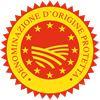Description
Carciofo Spinoso di Sardegna PDO is an artichoke belonging to the species Cynara scolymus, of the local Spinoso Sardo ecotype.
Production Area
The production area of Carciofo Spinoso di Sardegna PDO is within numerous municipalities in all of the provinces of the Sardinia region.
Production Method
It is cultivated in open fields with well-drained, medium-textured soils. Propagation is carried out with plants which have the specific characteristics of the Spinoso Sardo ecotype and are cultivated within the production area. Transplanting can take place in different periods, depending on whether the producer wants an early or late product. In the first case, transplanting takes place between the second half of June and the first few days of August, while the second takes place later, in August and September. Harvesting is carried out by hand by cutting the stem under the flower heads, and must take place before the bracts (leaves) open. The harvesting period is from September 1st to the end of May. Before being put on the market, the artichokes must be packed in sealed packaging displaying both the designation logo and the European logo. Every single packet is numbered so that it can always be tracked. All the above operations must take place in a short space of time, with the product being touched as little as possible, thereby guaranteeing the maximum freshness of this delicate and easily perishable vegetable.
Appearance and Flavour
Carciofo Spinoso di Sardegna PDO has a conic, elongated flower head that is moderately compact; it is green with brownish-violet hues and has yellow thorns on the bracts. The stalk is slightly fibrous and tender. It has a fleshy and tender consistency that is crunchy at the same time. The aroma is strong and floral and its flavour is characterised by a good balance between bitter and sweet, and is therefore only slightly astringent.
History
The presence of the artichoke in Sardinia has been documented since the time of the Phoenicians, with a long and well-rooted history that over time has made it one of the most important agricultural products in the region. It has been mentioned in literary works since the mid-18th century, for example Agricoltura di Sardegna (1780) by Andrea Manca dell’Arca, and La vita rustica della Sardegna riflessa nella lingua (1921) by Max Leopold Wagner. The importance of its cultivation is evidenced by the “insurance taxes” farmers paid for the surveillance of the artichoke fields during the 19th century. From the 20th century onwards, the artichoke became a specialised cultivation and soon became known outside of the region.
Gastronomy
Carciofo Spinoso di Sardegna PDO is a particularly delicate vegetable and should be kept in a cool, dry place, preferably in the refrigerator, and should be eaten fairly quickly. Thanks to its sweet flavour, it can be eaten either raw, in crudité, or used as an ingredient in many delicious cooked dishes or sauces. It can be preserved both naturally and in oil. It is used to make deep fried artichoke with mint and Sardinian ricotta cheese, and is ideal for making savoury flans. It pairs perfectly with a smooth and persistent Vermentino di Gallura PDO white wine.
Marketing
The product is marketed as Carciofo Spinoso di Sardegna PDO. It is sold between September and May, in trays containing from 2 to 12 heads, whole and/or in portions; in food-grade baskets weighing from 500 g to 5 kg; in wooden, cardboard or plastic food-grade boxes containing between 4 to 60 heads. The market categories are Extra and First.
Distinctive Features
Carciofo Spinoso di Sardegna PDO is only slightly astringent on the palate because the tannins are offset by the high carbohydrate content, which gives the product its sweet flavour.



































